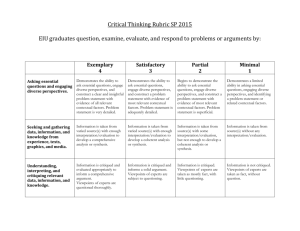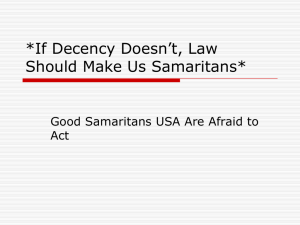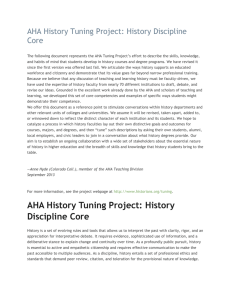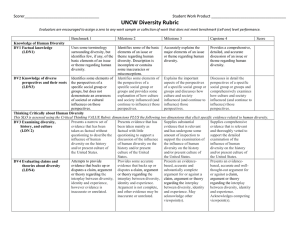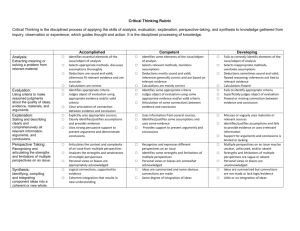QUEST Framework: AP Capstone Critical Thinking
advertisement
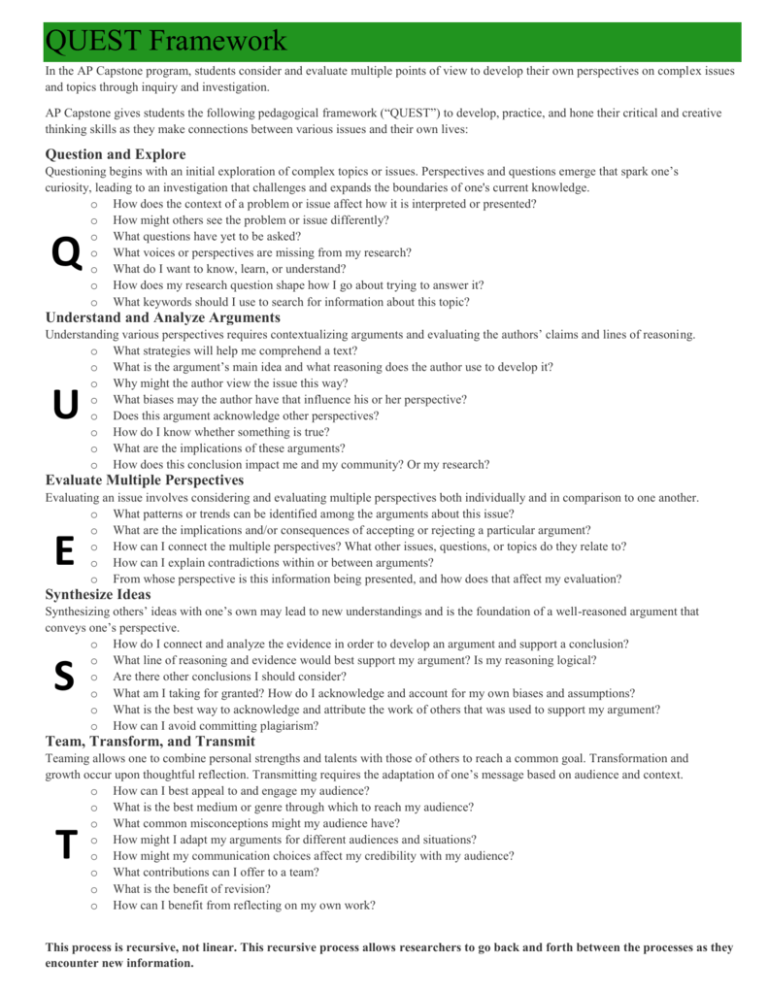
QUEST Framework In the AP Capstone program, students consider and evaluate multiple points of view to develop their own perspectives on complex issues and topics through inquiry and investigation. AP Capstone gives students the following pedagogical framework (“QUEST”) to develop, practice, and hone their critical and creative thinking skills as they make connections between various issues and their own lives: Question and Explore Questioning begins with an initial exploration of complex topics or issues. Perspectives and questions emerge that spark one’s curiosity, leading to an investigation that challenges and expands the boundaries of one's current knowledge. o How does the context of a problem or issue affect how it is interpreted or presented? o How might others see the problem or issue differently? o What questions have yet to be asked? o What voices or perspectives are missing from my research? o What do I want to know, learn, or understand? o How does my research question shape how I go about trying to answer it? o What keywords should I use to search for information about this topic? Q Understand and Analyze Arguments Understanding various perspectives requires contextualizing arguments and evaluating the authors’ claims and lines of reasoning. o What strategies will help me comprehend a text? o What is the argument’s main idea and what reasoning does the author use to develop it? o Why might the author view the issue this way? o What biases may the author have that influence his or her perspective? o Does this argument acknowledge other perspectives? o How do I know whether something is true? o What are the implications of these arguments? o How does this conclusion impact me and my community? Or my research? U Evaluate Multiple Perspectives Evaluating an issue involves considering and evaluating multiple perspectives both individually and in comparison to one another. o What patterns or trends can be identified among the arguments about this issue? o What are the implications and/or consequences of accepting or rejecting a particular argument? o How can I connect the multiple perspectives? What other issues, questions, or topics do they relate to? o How can I explain contradictions within or between arguments? o From whose perspective is this information being presented, and how does that affect my evaluation? E Synthesize Ideas Synthesizing others’ ideas with one’s own may lead to new understandings and is the foundation of a well-reasoned argument that conveys one’s perspective. o How do I connect and analyze the evidence in order to develop an argument and support a conclusion? o What line of reasoning and evidence would best support my argument? Is my reasoning logical? o Are there other conclusions I should consider? o What am I taking for granted? How do I acknowledge and account for my own biases and assumptions? o What is the best way to acknowledge and attribute the work of others that was used to support my argument? o How can I avoid committing plagiarism? S Team, Transform, and Transmit Teaming allows one to combine personal strengths and talents with those of others to reach a common goal. Transformation and growth occur upon thoughtful reflection. Transmitting requires the adaptation of one’s message based on audience and context. o How can I best appeal to and engage my audience? o What is the best medium or genre through which to reach my audience? o What common misconceptions might my audience have? o How might I adapt my arguments for different audiences and situations? o How might my communication choices affect my credibility with my audience? o What contributions can I offer to a team? o What is the benefit of revision? o How can I benefit from reflecting on my own work? T This process is recursive, not linear. This recursive process allows researchers to go back and forth between the processes as they encounter new information.

